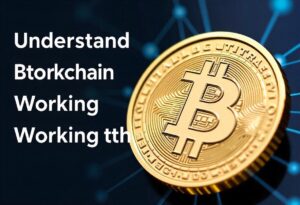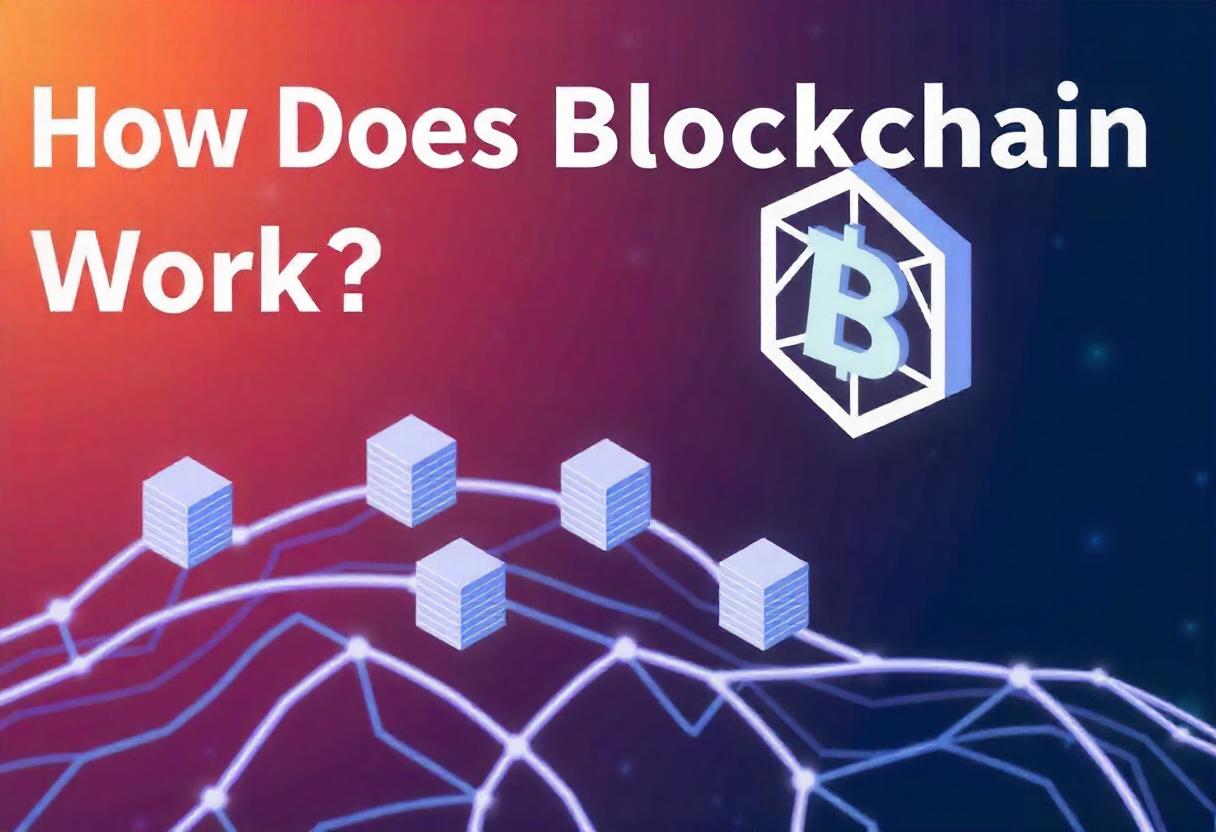Blockchain maintains a distributed, secure ledger of transactions. Start a transaction and report it to a group of PCs known as hubs; they verify it as accurate. Proof-of-work instruments enable blocks with confirmed exchanges to be created and included in the blockchain. Using cryptographic hashes links every block to the one before, ensuring integrity and data security. Blockchain is safe and easy to operate since the exchange is permanently recorded once a block is produced and cannot be modified. In this article we will discuss how does blockchain work.
Introduction to Blockchain:
Blockchain is a type of technology that maintains transparent records of transactions and ensures they cannot be changed. A few can define the blockchain transaction procedure as follows:
1. Working with an Exchange:
At the point when another exchange enters the blockchain network, all the data that should be sent is doubly encoded utilizing public and confidential keys.
2. Confirmation of Exchange:
The trade finds its way to a global network of shared computers. Every hub in the network will check for its legality, for example, guaranteeing a delicate equilibrium to complete the exchange.
3. Development of Another Block:
There are many hubs on a shared blockchain network and many continuous checks of exchanges. When an exchange checks, it shows natural behaviour and adds to the mempool. Every one of the verified exchanges at a given hub arranges a mempool; more form a block.
4. Agreement Calculation:
To make a block ongoing, the hubs that organize it will try to include it in the blockchain network. Hubs use an agreement method to maintain the blockchain’s security. All of the network’s hubs are told about the swap demand. Hubs confirm the trade by checking limits, like the source’s balance and whether the shipper and the buyer are registered hubs. It is assumed that the exchange is serious.
5. Expansion of the New Block to the Blockchain:
Once proven, the new block is added to the blockchain and the hash value is given. Each block contains the hash value of the previous block, cryptographically connecting the blocks to the shape chain
6. Exchange Total:
There is trade once the block is added to the blockchain. The details will always be stored in the blockchain. Anyone can bring the subtleties of the exchange and affirm it.
Understand Blockchain Working with Bitcoin:
We should understand the working of blockchain with a model including a Bitcoin exchange:
Stage 1: Working with the Exchange
A client starts an exchange to send Bitcoin through the blockchain network.
Stage 2: Check of Exchange
Every hub in the network receives word of the swap requirement. Hubs verify limits like the source’s balance and ensure the sender and the receiver are registered to guarantee the trade is authorized. Confirming this is supposing the trade is actual.
Stage 3: Development of Another Block
Checked exchanges are collected in mempools and gathered into a block. This block will contain different proven and approved exchanges.
Stage 4: Agreement Calculation
The new block is included in the blockchain via an agreement tool. We apply the proof of work (PoW) calculation for the Bitcoin—mining equipment debate to solve a challenging numerical problem to produce a hash satisfying the objective worth. The leading miner meant to solve the issue will block the blockchain and get paid Bitcoin.
Stage 5: Development of New Block to the Blockchain
When the block has a substantial hash verified through Confirmation of Work, it is added to the blockchain. Each block incorporates a hash of the past block, making a safe, cryptographic connection between blocks.
Stage 6: Exchange Total
When the block is added to the blockchain, the trade is over. Everyone involved in the deal can see the trade data, which are kept forever to keep things simple and stop people from spending money twice.

Is Blockchain Secure?
A blockchain is profoundly secure because of its construction. Each block contains the hash of the past block’s header and a hash of the exchanges in the Merkle tree of the ongoing block, cryptographically binding it to the past block. We should think about the following security suggestions:
Blockchain Changelessness:
If somebody attempts to change information on the second block of a 10-block chain, they should change information on every single ensuing block. Otherwise, the blockchain will become invalid since the later blocks rely upon the hash esteem in the second block, which has changed.
51% Assault:
To change a block in a blockchain, an agreement calculation is utilized. An aggressor would have to control and change 51% or a greater amount of the duplicates of the blockchain to make their modified rendition the larger part duplicate, which is almost unthinkable because of the time, cash, and computational assets required.
Factors That Make Blockchain Secure:
Byzantine General Issue:
The blockchain utilizes the Byzantine General issue idea: if 2/3 of diggers consent to add a block to the chain, only the block will be added. This rule upgrades blockchain security.
Evidence of Work:
Adding a block to the chain requires proof of work (PoW). Diggers use great time and effort to mine the block from difficult numerical problems. Indeed, they verify that the block remains undamaged even after the issue has been resolved, making it difficult for programmers to access the blockchain.
How Blockchain Mining Functions:
Blockchain mining deals with different strides, from the exchange to being added to the chain:
- Exchange: Information moves between parties on a blockchain network, prompting block creation.
- Tackle Numerical question: Excavators handle a numerical issue to get a specific hash.
- Block Settled: Excavators mine the block by tackling the issue.
- Diggers Confirm Legitimacy: Different excavators check the additional block isn’t pernicious.
- Block is Added: After check, the block is added to the blockchain.
FAQs
1. What is the main role of a blockchain?
The basic role of a blockchain is to provide a decentralized and changeless record that records exchanges in a solid and straightforward way. This innovation guarantees that all network members have a synchronized perspective on the exchange history, forestalling misrepresentation and unapproved changes.
2. How does blockchain work guarantee information respectability?
Blockchain guarantees information respectability through cryptographic hashing and affixing of blocks. Each block contains a hash of the past block, making a solid connection between them. If any data in a block is changed, the hash of the block also changes. This deletes all the blocks that come from the change and warns the network not to make it.
3. What are the critical contrasts between Verification of Work (PoW) and confirmation of stake (PoS) agreement systems?
Confirmation of Work (PoW) expects excavators to take care of mind-boggling numerical issues to approve exchanges and make new blocks, consuming critical computational power and energy. Proof of Stake (PoS) chooses validators based on how much cryptographic money they hold and will “stake” as security, which requires less computational influence and energy yet depends on members holding and securing their resources.
4. Could blockchain be applied for uses other than Bitcoin?
It’s useful for a lot of things besides coins.. It is only the tip of the iceberg; managers use in-store networks, casting a ballot framework, clever contracts, and character confirmation. Its capacity to give secure, straightforward, and sealed records makes it significant for different businesses.
5. What difficulties does blockchain innovation face?
Several difficulties, including versatility issues (managing huge volumes of exchanges), high energy utilization (particularly in PoW frameworks), administrative worries (complying with regulations and guidelines), and integration with existing frameworks. Tending to these difficulties is significant for more extensive reception and adequacy.




